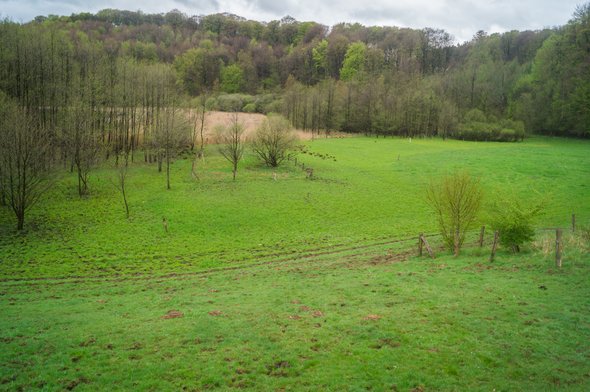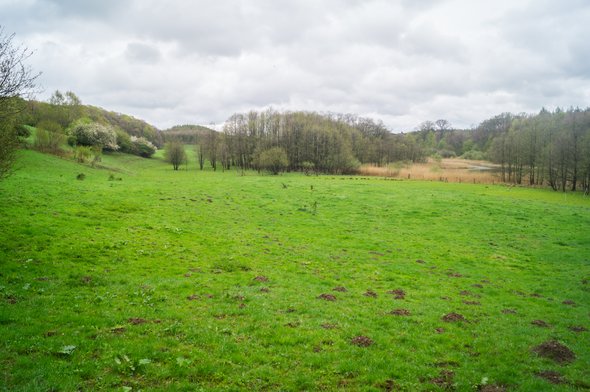Pseudochorthippus montanus is a Caelifera from the family grasshoppers (Acrididae). The males are slightly smaller than the females, with a body length of 13 to 16mm, while the females are between 17 and 22mm long. The now rare grasshopper lives as a larva and imago from May to October in wet grasslands and feeds mainly on grasses. Starting in June, the females lay several clusters of eggs with a maximum of 50 eggs in total on wet, often slightly disturbed spots into the soil. Here, given the appropriate soil moisture in winter and sunshine in spring, the larvae develop. Since P. montanus can only live in permanently moist grassland that is neither used too intensively nor has been abandoned, it is now endangered throughout Germany and many local populations have become extinct in recent years. Because the animals are usually flightless, they can spread on foot no more than 250m, and as the few remaining suitable habitats are usually far apart, there are now hardly any resettlement opportunities. However, as P. montanus will be forced to migrate to other wet meadows in the future due to climate change, the survival prognoses of the species are poor.






